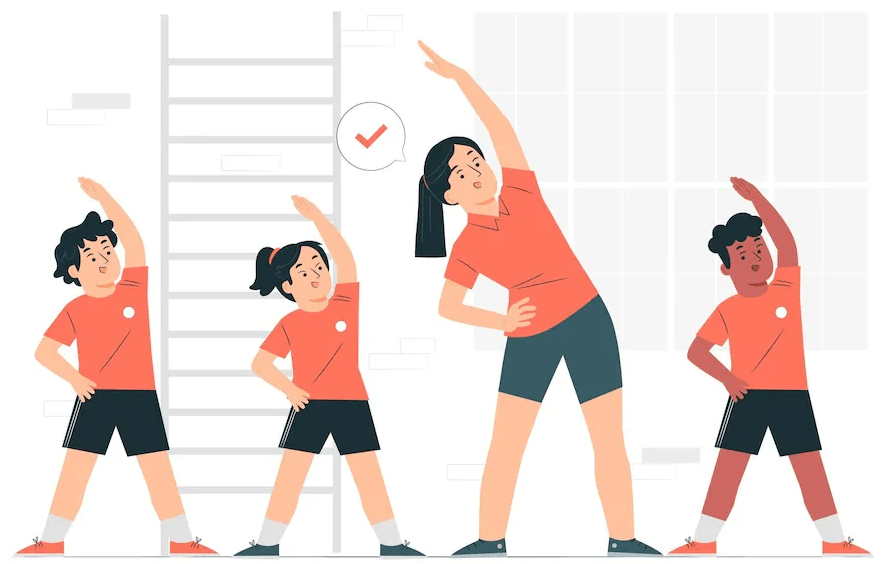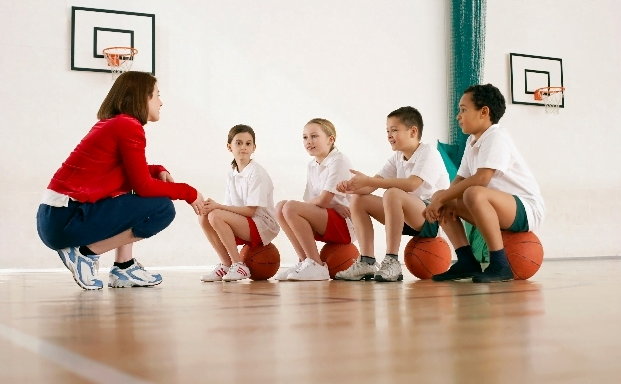Physical Education (PE) has been a crucial component of a student’s education for centuries. It aims to promote physical and mental well-being, foster healthy habits, and teach students the importance of exercise and sportsmanship. However, like any other aspect of education, physical education has its pros and cons. In this essay, we will take a closer look at both sides of the argument.
Pros of Physical Education
- Improves physical fitness: Physical education classes provide students with the opportunity to engage in regular physical activity, which can help improve their physical fitness levels. This can lead to a healthier lifestyle and reduce the risk of health problems such as obesity, heart disease, and type 2 diabetes.
- Promotes teamwork and sportsmanship: PE classes provide students with the opportunity to work in teams and learn the importance of cooperation and sportsmanship. This can help build valuable social skills that students can carry into their future careers and personal relationships.
- Relieves stress: Exercise is known to relieve stress and promote mental well-being. PE classes give students the opportunity to engage in physical activity, which can help reduce stress levels and improve their overall mood.
- Teaches discipline: Physical education requires discipline, focus, and effort. By participating in PE classes, students can develop discipline, improve their concentration, and increase their motivation to strive for excellence in all aspects of their lives.
Cons of Physical Education
- Time constraints: PE classes can take up valuable time in a student’s schedule that could be used for academic subjects or extracurricular activities. Some schools may have limited time for PE, meaning students may not get enough physical activity to reap its full benefits.
- Inequality of access: Not all schools have access to the same resources, facilities, or equipment for PE classes. This can result in an unequal experience for students, with some receiving a higher-quality education in physical education than others.
- Lack of focus on individual needs: PE classes may not cater to the individual needs and abilities of each student. This can result in students who struggle physically or have limited athletic ability feeling discouraged or unmotivated.
- Potential for injury: Engaging in physical activity carries the risk of injury. PE classes may not always be adequately supervised, meaning students could be at risk of injury without proper protection or attention.
advantages and disadvantages of physical classes
Physical classes, also known as in-person classes or traditional classes, have been the norm for centuries. However, with the rise of technology, online classes have become a popular alternative. Here are some advantages and disadvantages of physical classes:
Advantages:
- Face-to-face interaction: Physical classes provide students with face-to-face interaction with their teachers and classmates, which can help foster a sense of community and encourage discussion and debate.
- Access to resources: Physical classes often provide access to resources such as textbooks, libraries, and computer labs, which can be helpful for students who may not have access to these resources at home.
- Hands-on learning: Physical classes often provide opportunities for hands-on learning, such as lab experiments or field trips, which can help students better understand and remember the material.
- Discipline and structure: Physical classes require students to adhere to a schedule and attend class regularly, which can help foster discipline and structure in their academic lives.
- Socialization: Physical classes provide students with opportunities for socialization and networking, which can be important for building relationships and developing social skills.
Disadvantages:
- Time and location constraints: Physical classes require students to attend class at a specific time and location, which can be inconvenient for students who have other commitments or live far from campus.
- Cost: Physical classes can be more expensive than online classes, as they often require students to pay for tuition, transportation, and housing.
- Commuting: Physical classes require students to commute to and from campus, which can be time-consuming and expensive, particularly for students who live far from campus.
- Limited flexibility: Physical classes often have a set schedule and structure, which may not accommodate students who need more flexibility in their academic schedules.
- Class size: Physical classes may have large class sizes, which can make it difficult for students to receive individualized attention from their teachers.
The Importance of Physical Education

Physical education plays a vital role in the holistic development of individuals, emphasizing the significance of physical fitness, health, and overall well-being. It goes beyond simply engaging in physical activities; it encompasses various aspects that contribute to the overall growth of individuals, including cognitive, social, and emotional development.
One primary importance of physical education is its positive impact on physical health. Regular participation in physical activities and exercises helps individuals develop cardiovascular endurance, muscular strength, and flexibility. It promotes healthy body weight, reduces the risk of chronic diseases such as obesity, diabetes, and heart conditions, and enhances overall physical fitness.
Furthermore, physical education nurtures mental and cognitive development. Engaging in physical activities stimulates the brain, releasing endorphins that contribute to improved mood, reduced stress levels, and increased mental alertness. It has been linked to enhanced cognitive functions, including improved concentration, memory, and problem-solving skills. Regular physical exercise also contributes to better sleep patterns, promoting overall mental well-being.
Physical education also fosters social and emotional development. It provides opportunities for students to interact with their peers, promoting teamwork, cooperation, and communication skills. Physical education classes often involve team sports, group exercises, and cooperative games, which help develop social skills, sportsmanship, and leadership qualities. Additionally, it instills values such as discipline, perseverance, and goal-setting, contributing to the overall character development of individuals.
How to Make Physical Education More Effective
To maximize the effectiveness of physical education, certain strategies can be implemented to create a positive and engaging learning environment. First and foremost, incorporating a variety of physical activities and exercises is crucial. Offering a diverse range of sports, fitness routines, and recreational games ensures that students can explore different interests and find activities that resonate with them personally.
Additionally, integrating technology and innovation can enhance the effectiveness of physical education. Utilizing wearable fitness trackers, mobile applications, and interactive devices can make the learning experience more interactive and engaging. These tools can provide real-time feedback, track progress, and create a sense of excitement and motivation among students.
Personalization is another key aspect of effective physical education. Recognizing that students have different abilities, interests, and learning styles, it is important to provide options and adapt activities to meet individual needs. Offering modifications and alternative exercises allows every student to participate and succeed at their own level.
Furthermore, promoting a positive and inclusive environment is essential. Encouraging a supportive and non-judgmental atmosphere where students feel comfortable and empowered to take risks and challenge themselves is critical. Teachers should emphasize effort, improvement, and personal growth rather than solely focusing on competition or performance.
Collaboration between physical education teachers, school administrators, parents, and the community is also crucial in making physical education more effective. By working together, they can create comprehensive physical education programs, establish clear goals and expectations, and provide resources and support for both teachers and students.
By recognizing the importance of physical education and implementing strategies to enhance its effectiveness, we can empower individuals to lead healthier lifestyles, develop essential life skills, and cultivate a lifelong appreciation for physical activity and well-being.
In conclusion, physical education has both pros and cons that must be taken into consideration when evaluating its role in a student’s education. While it can provide valuable benefits such as improving physical fitness and promoting teamwork and sportsmanship, it can also present challenges such as time constraints, inequality of access, and the potential for injury. It is up to schools and educators to strike a balance between the benefits and drawbacks of physical education to provide students with the best possible experience.


Love it awesome